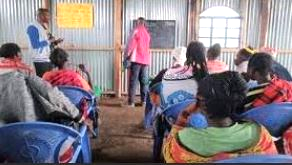In the journey of a child’s education, teachers and parents are the two most powerful influences. When these forces work in harmony, a child’s growth – academic, emotional, and social – becomes not just possible but profound. The classroom alone cannot raise a confident learner, just as the home alone cannot provide all the structured learning a child needs. It is the collaboration between teachers and parents, built on trust, communication, and mutual respect, which nurtures a sense of confidence and curiosity in learners.
Confidence is not an inherited trait; it is developed through consistent encouragement, clear guidance, and a secure environment where mistakes are seen as opportunities to learn. When teachers and parents unite in purpose, they create a support system that reinforces positive messages and consistent expectations. A child who hears the same values echoed at home and in school begins to internalize them. For instance, if both teacher and parent emphasize honesty, hard work, and respect, the learner grows up understanding that these principles are not situational—they are a way of life.
Communication is the bridge that sustains this partnership. Teachers who regularly share feedback with parents – both on achievements and areas of improvement – invite the parent to become an active participant in the child’s learning. Similarly, parents who share insights about their child’s behaviour, interests, and challenges at home provide teachers with valuable context that shapes how they approach instruction. A teacher who knows that a learner struggles with confidence when speaking in front of others can create gentle, supportive opportunities for them to participate, while a parent can reinforce the same encouragement at home. This cycle of mutual support helps the learner gradually overcome fears and discover their voice.
Children are remarkably perceptive. They notice when the adults in their lives are aligned, and they also notice when they are not. When a teacher and parent are in constant conflict, the child feels torn and confused. They may begin to manipulate situations or withdraw emotionally, unsure of whose guidance to follow. However, when the two communicate regularly and present a united front, the child feels secure. That sense of safety becomes the soil from which confidence grows. The learner knows that both home and school are working together for their good, and this assurance emboldens them to explore, question, and take academic and social risks without fear of failure.
Parent–teacher collaboration also extends beyond individual communication to shared involvement in school life. When parents attend school events, volunteer during activities, or show genuine interest in classroom projects, children perceive learning as something valuable and celebrated. They begin to associate school with pride rather than pressure. Teachers, in turn, feel supported and motivated, knowing that their work is recognized and appreciated. This partnership strengthens the entire learning environment, transforming it from a space of instruction into a community of growth.
ALSO READ:
St. Joseph’s Girls-Kitale unveils state -of -the -art gate at colourful ceremony
In today’s fast-changing educational landscape, collaboration is even more critical. Learners face increasing academic demands, social challenges, and emotional pressures that require a unified response from both home and school. Technology, while a valuable tool, has introduced distractions and reduced meaningful human interaction. A parent–teacher partnership helps learners navigate this complexity. Together, they can teach digital discipline, time management, and empathy—skills essential for success in the modern world.
The collaboration does not mean that parents must be teachers at home or that teachers should assume parental roles in school. It is about complementing each other’s efforts. The parent’s role is to provide emotional stability, reinforce positive habits, and maintain a conducive home environment for learning. The teacher’s role is to guide academic progress, develop critical thinking, and nurture creativity. When these responsibilities intersect with mutual understanding, learners experience a seamless continuum of care and guidance.
It is also important to recognize that collaboration thrives on respect. Teachers should see parents as allies rather than critics, while parents should view teachers as professionals committed to their child’s best interests. Open dialogue helps prevent misunderstandings. A parent who listens before judging a teacher’s decision, and a teacher who seeks to understand a parent’s concern before responding, both model emotional intelligence—an attribute children unconsciously adopt.
Confidence in learners does not emerge overnight. It is the result of years of small affirmations, shared goals, and consistent support. A child who grows up in an environment where home and school celebrate effort as much as achievement learns resilience. They learn that setbacks are not the end of the story but part of the learning process. Such learners are more likely to take initiative, lead with empathy, and contribute positively to their communities.
Ultimately, the phrase “Together We Grow” captures the essence of education as a shared journey. Growth is not confined to learners alone; teachers and parents also evolve through collaboration. Teachers gain insight into diverse family dynamics, while parents gain a deeper appreciation for the art of teaching. This mutual learning strengthens the fabric of the educational community and ensures that every learner stands on a foundation built by both care and competence.
When teachers and parents walk hand in hand, the message to the learner is unmistakable: You are supported, you are valued, and you can succeed. In that assurance lies the birth of confidence, the courage to dream, and the belief that growth is a shared victory. Together, indeed, we grow.
By Virginia Bwana
Virginia is a passionate early childhood educator and an advocate of homeschooling.
You can also follow our social media pages on Twitter: Education News KE and Facebook: Education News Newspaper for timely updates.
>>> Click here to stay up-to-date with trending regional stories
>>> Click here to read more informed opinions on the country’s education landscape






